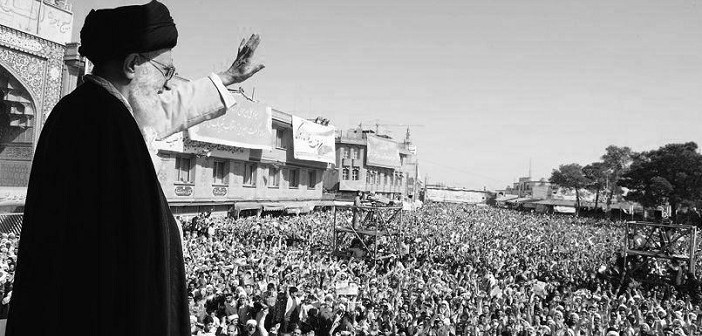“Two souls are dwelling in my breast”. This citation refers to the literary work Faust, by the German author Johann Wolfgang von Goethe, who also published the West–eastern diwan, a collection of lyrical poems which was mainly inspired by the famous Persian poet Hafez. An inspirited introduction to this article, showing two conflicting identities within Iran and analyses their effects on foreign policy.
This paper is adapting to the constructivist approach, which relies on the analysis of speech acts and the use of narratives to justify actions and governance. It is shown that during the timeframe studied, from 1963 until today, a Persian, as well as a Shiite identity, is in fact active. A Persian-shaped foreign policy concentrates on international cooperation, while a Shiite-shaped one is more focused on the region and other Muslim states, as well as Shiites and Muslims under threat. Both kinds of foreign policy are opposed to foreign influence.
Persian and Shiite identities in Iran
The Iranians are a people claiming two complex and interdependent traditions. One derives from ancient Persia, the other from Islam. Based on this assumption of the Amercian political scientist and writer Sandra Mackey (The Iranians: Persia, Islam, and the soul of a nation, New York, Dutton, 1996), who claims that Iranian Peoples’ self-perception is influenced by two different identities – a national Persian identity or a religious Shiite identity – this article seeks to analyse how these identities affect the foreign policy of Iran. Therefore, it addresses the question of what influence is exerted by the conflicting identities in Iran on the country’s foreign policy.
In modern Iran, a Persian and a Shiite identity seem to be at odds concerning the rule over the country. However, this was not always the case. At the time of the Safavids (1501-1722 AD) and the Qajars (1779-1925 AD) the Shah dynasties and the Shiite clergy existed side by side, even though not always without tensions. Shiism was state religion in a secular governed Persian country. But Reza Pahlavi and his son and successor Mohammad Reza Shah Pahlavi identified Shiism as an obstacle to their modernization policy and tried to push Shiism back in many political and social areas. Since then, the two elements of Iranian identity are in conflict with each other. Since the revolution between 1977 and 1979, parts of the Shiite clergy under the leadership of Ayatollah Khomeini and his successor Ayatollah Ali Khamenei decided this conflict to their favour. The regime change brought along a shift in the country’s foreign policy, too. While the Shahs, in the wake of the Cold War, opted for strong cooperation with Western countries, they also maintained a friendly relationship with the Soviet Union. The Islamic Republic – except for the recent agreement on nuclear energy – refuses to cooperate with the USA and seeks alignments with religious and ideological likeminded political actors in the nearby area like Hezbollah in Lebanon or the present Government of Iraq.
Analysing the conflict between identities
To show the influence of the identities, a conflict analysis needs to ask for the relevant parties acting on the bases of these identities and narratives. In the conflict analysed, the Pahlavi dynasty can be identified as the actor as well as the politically active part of the Shiite clergy. Taking into account the political leading figures, there is Shah Mohammad Reza Pahlavi (1941-1980) and his son Cyrus Reza Pahlavi (based in the US and politically active since 2000) on the one side and as the counterpart on the other side Ayatollah Khomeini (1963-1989) and later his successor Khamenei (since 1989) as the counterpart. So the thesis here is that both parties rely on two different patterns of identity to legitimise their claims to power and their foreign policy.
As identity is an indivisible conflict issue, the question of a struggle for interpretive predominance arises. In contrast, and as past times have showed for Iran also, several identities can certainly coexist.
Persian and Shiite foreign policy
So if the supposed identity patterns have an effect on the actions of the conflicting parties indeed, it should be possible to see this in their justifying actions, especially justifying speeches and claims for their actions. Identities are strongly relying on narratives and narratives are also used for justifying one’s own actions. Within these justifying narratives, it should be possible to see the identities at work. And the analysis of the conflict shows that all actors considered– also in the context of foreign policy – have recourse in their speech acts on the postulated identities.
While the ruling part of the Shiite clergy still justifies their domination and foreign policy on an Islamic narrative, the Shah’s son – in contrast to his father – hardly engages on a Persian narrative. He argues with human rights. With respect to foreign policy there are also overlaps between the two identities: Both reject any foreign interference and anti-imperialism can be seen as a central element of Iranian foreign policy.
The actors explain the visible shift in the foreign policy of Iran based on identities. Especially concerning oil exports, the Shah cooperated during the Cold War with Western countries as well as with the Soviet Union. Ancient Persia under Cyrus the Great and his successors function as the mission statement in terms of the Persian narrative, which can especially be seen in the celebrations that took place in October 1971 on the occasion of the 2,500th anniversary of the founding of the Persian Empire by Cyrus the Great. The choice of venue, Persepolis, too contributes to the symbolism of the ancient tradition of tribute paying Nations under the rule of the Persian Empire.
Also in the Islamic Republic of Khomeini and Khamenei a relation between external action and Shiite identity can be seen. In this context, the term arrogance refers to the refusal to cooperate with the US and Israel. The experience of Karbala, which is essential to the Shiite identity, can be seen in the sensitivities about injustice and foreign domination. In the so-called Battle of Karbala in 680 AD, al-Ḥusayn ibn Ali, grandson of the Prophet Muhammad and the fourth caliph, was defeated and massacred by an army sent by the Umayyad caliph Yazid I. This perception of injustice also refers to the nuclear program and the discourse on human rights which Iran proclaims to defend, contrary to the US in their view, in the neighboring states of Palestine, Lebanon, Iraq and Afghanistan. This general view also did not change due to the nuclear compromise between Iran and the 5+1 group achieved last year. Although Ayatollah Ali Khamenei declared a bit later that the slogan “Death to America” does not mean bringing death to American people, he still held the point that the slogan expresses the fundamental opposition of Iran to American “arrogance”.
From this perspective, Cyrus Reza Pahlavi is one of the unjust critics of the human rights situation in Iran. But he justifies his criticism by pointing to human rights as a global justifying narrative without boundaries. In his strategy to legitimate his actions there is a clear break with the tradition of his father. Next to the fact that he of course still is the son of the last Shah of Persia, the Persian narrative is barely recognizable in his self-declared political ambitions. However, considering that Iranian people living under the Shah at the age of 20 are in their sixties today, they might still be a relevant number of people having a generally positive view concerning their former ruler. In contrast, regarding the fact that there is no political figure left taking up this old narrative, it is unclear to what extent the Persian identity could be experiencing a renaissance.
by Michael NANN and David SUMME




